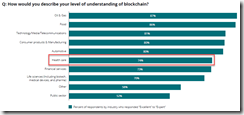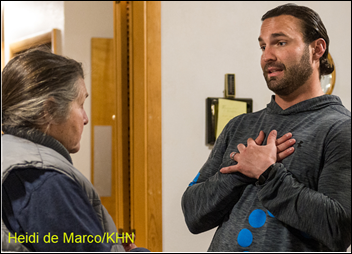Weekender 10/26/18

Weekly News Recap
- Nova Scotia’s province-wide EHR selection nears completion, with all vendors except Allscripts and Cerner failing to make the cut in a process that has raised questions about possible bias
- Clearlake Capital Group will acquire provider management, credentialing, and payer enrollment technology vendor Symplr
- VC-backed Naya Health, which developed a $1,000 smart breast pump, apparently shuts down after user complaints that its product does not work
- Vatica Health makes a $1 million bid to acquire the assets of chronic care management company CareSync, which abruptly closed its doors in June
- Politico reports that Pentagon investigators have found Madigan Army Medical Center’s new Cerner-based MHS Genesis software lacking in effectiveness, suitability, and interoperability
- Deborah DiSanzo, general manager of IBM Watson Health for the past three years, will step down
Best Reader Comments
What the US has now is elements of several [healthcare] systems, As T.R. Reid described in “The Healing of America; A Global Quest for Better, Cheaper, and Fairer Health Care,” for veterans and their families, we’re Britain or Cuba. For those who receive health insurance through their employer, we’re Germany or France. For people over 65 on Medicare, we’re Canada. For the percent of the population who have no health insurance, the United States is Cambodia. (Wadiego)
Very nice of IBM to allow Deb DeSanzo to keep her job and take a demotion despite her lack of success in turning the corner. I wonder how the thousands of IBM’ers who were laid off at the end of each quarter the past three years when the numbers weren’t good feel about this? (The More Things Change)
Watercooler Talk Tidbits


Readers funded the DonorsChoose teacher grant request of Mrs. H in Alabama, who asked for STEM maker kits for her fifth grade class. She reports, “This project has been a lifesaver. My students were so surprised when we received the kits. They were so excited to know they had something that they could actually build by themselves without my instruction. My students are using the K’NEX STEM Education Kits during our science intervention.”

The US Military Academy uses a robot to co-teach an ethics philosophy course, feeding Bina48 data about wars and philosophy as well as an instructor’s lesson plan to allow it (her?) to deliver a lecture and answer student questions. The AI developers blocked her access to the Internet fearing that, like many students, she would take the lazy way out and simply regurgitate Wikipedia. She has her own Facebook page and completed a “Philosophy of Love” college class a year ago. Developers patched her rather stern countenance into a smile a couple of months ago.

23andMe CEO Anne Wojcicki says one of the company’s biggest competitors is Gwyneth Paltrow’s Goop — which specializes in wacky products that have zero scientific basis — and fake, clickbait news about health that draws in naive eyeballs. She summarizes Goop’s “faux science,” such as anti-vaccine advocacy, as benefitting from Paltrow’s celebrity in a way that the CDC can’t counter with actual facts. Goop paid civil penalties and offered customer refunds to settle a lawsuit over the company’s promotion of a floral blend to prevent depression and jade vaginal eggs to regulate menstrual cycles.
Analysis finds that eliminating the requirement that all Americans carry health insurance and allowing the sale of policies that don’t cover pre-existing conditions have caused a 16 percent jump in premium cost for exchange-based silver plans.
Wired takes a contrarian view of Silicon Valley’s obsession with disruption in reviewing three books, noting:
- Technology’s promise to lead us into the future turned out to be all about those companies – taking our personal data, eating up our time and creativity, and invading our homes and cities
- They promised an open web and individual liberty while trampling on both
- They created rising inequality, not because it was inevitable, but because they used old-school capitalism in dodging regulation and squashing competition
- They squeezed labor markets by hiring obedient, flexible, and poorly paid subcontractors and unofficial workers – many of them immigrants – who are not covered by wage and safety protection
- Venture capitalists make massive profits by arriving late to the party after companies have already taken risks and developed something innovative
- Much of the hard work of innovation is accomplished using government grants and research for which taxpayers receive nothing
- Science-based philanthropy rewards causes favored by tech donors who prefer life-extending technologies for themselves rather than a better healthcare system for all
A report by Truth in Advertising titled “Cancer Care: The Deceptive Marketing of Hope” finds that cancer centers have exponentially ramped up their advertising in competing for patients, with 90 percent of them using emotion-tugging but deceptive stories in which outliers who survived high-mortality cancer (at least in the short term) imply that the specific cancer center saved them despite poor odds (example: “statistics mean nothing to believers.”) For-profit chain Cancer Treatment Centers of America leads the advertising pack. Following CTCA’s lead are mostly non-profits, which unlike CTCA, are not subject to Federal Trade Commission actions for deceptive advertising. All advertise clinical trials, immunotherapy, and genomic testing that aren’t always effective and carry their own risks.

Doylestown Hospital (PA) installs a free short story dispenser in its ED, which gives visitors a short read printed on non-toxic, recycled paper that can help them pass the time. It’s a nice thought, although convincing Americans to look away from their phones or ad-filled TV junk shows to actually read something is a tough sell.
In Case You Missed It
- News 10/26/18
- EPtalk by Dr. Jayne 10/25/18
- HIStalk Interviews Rachel Marano, Managing Partner, Pivot Point Consulting
- A Machine Learning Primer for Clinicians–Part 2
- News 10/24/18
- Curbside Consult with Dr. Jayne 10/22/18
- Monday Morning Update 10/22/18
Get Involved
- Join my Rolodex to provide occasional news reaction or ideas
- Contribute regularly as a provider CIO, IT director, or informatics nurse (anonymous or not)
- Be interviewed (providers)
- Deliver an educational webinar (providers)
- Sponsor
- Report a news item or rumor (anonymous or not)
- Sign up for email updates
- Connect on LinkedIn
- Contact Mr. H













































































































"A valid concern..." Oh please. Everyone picks the software they like and the origin of that software is an afterthought.…